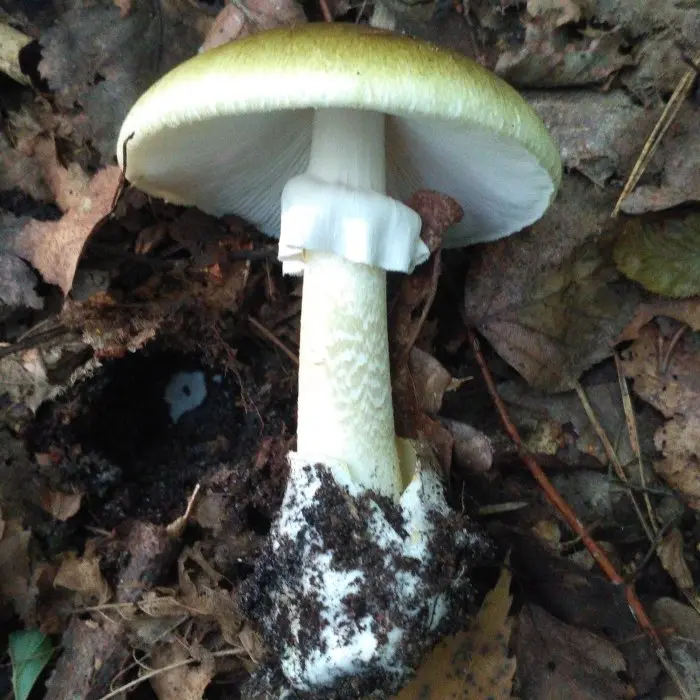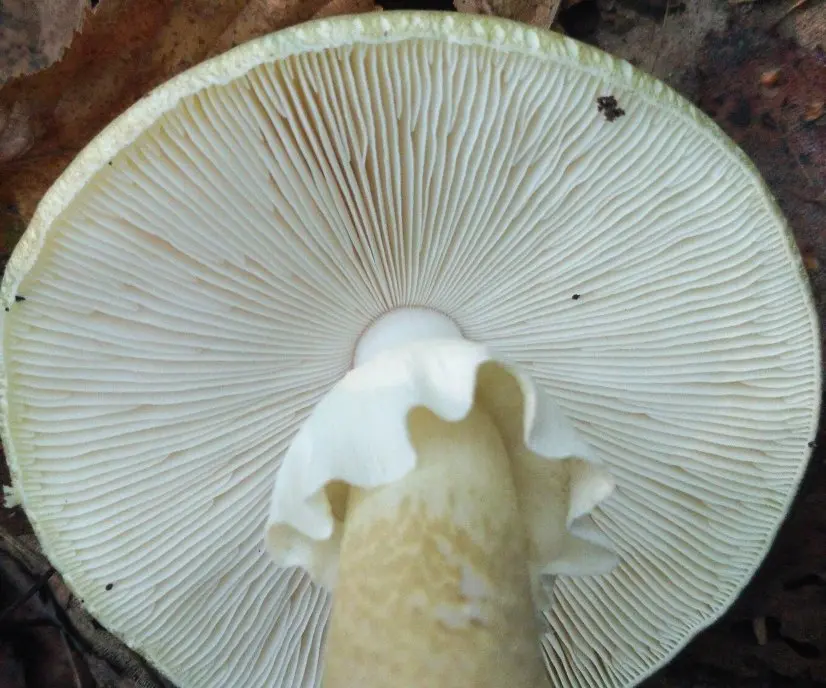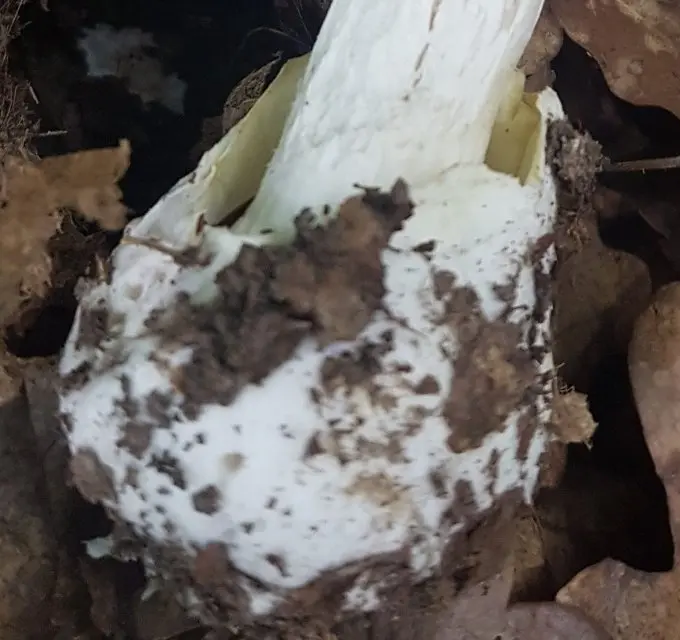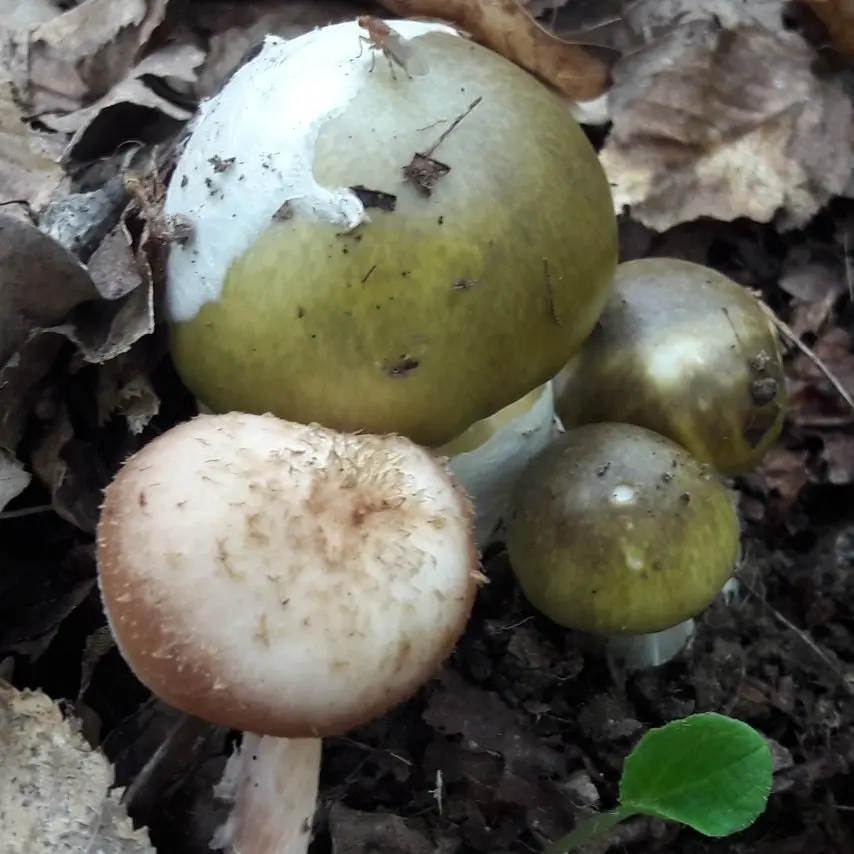Amanita phalloides
- Division: Basidiomycota (Basidiomycetes)
- Subdivision: Agaricomycotina (Agaricomycetes)
- Class: Agaricomycetes (Agaricomycetes)
- Subclass: Agaricomycetidae (Agaricomycetes)
- Order: Agaricales (Agaric or Lamellar)
- Family: Amanitaceae (Amanitaceae)
- Genus: Amanita (Amanita)
- Type: Amanita phalloides (Pale grebe)
- Fly agaric green
- Fly agaric white

In English-speaking countries, the Pale grebe has received the popular name “death cap” – “death cap”, “death cap”.
Defining characters for this species include:
- bag-shaped white volva around the base of the leg
- ring
- white plates
- white imprint of spore powder
- lack of grooves on the hat
The cap of the Pale Grebe is usually in shades of green or brown-brown, although color is not the most reliable criterion for identifying this fungus, as it is quite variable. Sometimes white spots remain on the hat, the remains of a common veil.
head: 4-16 cm in diameter, at first almost round or oval. With growth, it becomes convex, then broadly convex, flat-convex, to flat in very old mushrooms. The skin of the cap is smooth, bald, sticky in wet weather and shiny in dry weather. Color ranges from dull green to olive, yellowish to brownish (rare white “albino” forms usually grow with colored cap forms). In green- and olive-colored specimens, clearly visible dark radial fibers appear, in light-colored pale grebes these fibers are less pronounced, in brownish-colored ones they can be difficult to see. On young hats there may be white shreds, “warts”, the remains of a veil in which the embryo of the fungus develops, the same as in the well-known red fly agaric. But in the pale grebe, these “warts” usually disappear with age: they fall off or are washed away by rains.

plates: free or almost free. White (sometimes with a slight greenish tinge). Frequent, wide.
Leg: 5-18 cm high and 1-2,5 cm thick. Cylindrical, central. More or less even, often tapering towards the apex and widening to a thickened base. Bald or finely pubescent. White or with shades of the color of the hat, it can be covered with a beautiful moire pattern. In vertical section, the stem looks densely stuffed or sometimes partially hollow, with a small central cavity, with stuffing material consisting of longitudinally oriented fibers, with larval tunnels matching the color of the flesh.
Ring: white, large, strong, slightly drooping, similar to a ballerina’s skirt. Top with small radial strokes, bottom surface slightly felted. The ring usually remains on the stem for a long time, but is sometimes lost.
Volvo: bag-shaped, white, cup-shaped, free, clasps the thickened base of the leg. Often the base of the stem and Volvo are quite low, at ground level, and can be completely hidden by the leaves.

Pulp: white throughout, does not change color when broken, cut or bruised.
Smell: in young mushrooms, mild mushroom, pleasant. In the old it is described as unpleasant, sweetish.
Taste: according to the literature, the taste of cooked pale toadstool is unusually beautiful. The flavor of the raw mushroom is described as “soft, mushroomy”. Due to the extreme toxicity of the pale grebe, there are not many who want to try the mushroom, as you understand. And we strongly recommend to refrain from such tastings.
spore powder: White.
Споры 7-12 x 6-9 microns, smooth, smooth, ellipsoid, amyloid.
Basidia 4-spored, without clamps.
The pale grebe appears to form mycorrhiza with deciduous trees. First of all, oak, linden, birch are indicated, less often – maple, hazel.
It grows in broad-leaved and deciduous, mixed with deciduous forests. Prefers bright places, small clearings.
The Modern Encyclopedic Dictionary, the Illustrated Encyclopedic Dictionary and the Encyclopedia of the mushroom picker indicate both the place of growth and purely coniferous forests.
From early summer to mid-autumn, June – October.
Distributed in central Our Country and other countries with a continental climate: Belarus, Ukraine, found in European countries.
The North American Pale Grebe is the same as the classic European Amanita phalloides, it was introduced to the North American continent in California and the New Jersey area and is now actively expanding its range on the West Coast and the Mid-Atlantic.
The mushroom is deadly poisonous.
Even the smallest dose can be fatal.
There is still no reliable data on what dose is considered “already lethal”. There are different versions. So, some sources indicate that 1 g of raw mushroom per 1 kg of live weight is enough for fatal poisoning. The author of this note believes that these data are too optimistic.
The fact is that Pale grebe contains not one, but several toxins. The toxins isolated from the pulp of the fungus are polypeptides. Three groups of toxins have been identified: amatoxins (amanitin α, β, γ), phalloidins and phallolysins.
Amatoxins are responsible for organ damage. The lethal dose of amatoxin is 0,1–0,3 mg/kg of body weight; the consumption of a single mushroom can be fatal (40 g of mushrooms contains 5–15 mg of amanitin α).
Phallotoxins are essentially alkaloids, they are found only in the leg of the pale grebe and the smelly fly agaric. These toxins cause functional and structural disintegration of the gastric and intestinal mucosa within 6-8 hours, which significantly accelerates the absorption of amatoxins.
The insidiousness of the Pale grebe is that the symptoms of poisoning do not appear immediately, but after 6-12, and sometimes 30-40 hours after eating the mushroom, when the poisons have already dealt a terrible blow to the liver, kidneys and all internal organs.
The first symptoms of Pale Toadstool poisoning appear when the poison enters the brain:
- nausea
- indomitable vomiting
- sudden sharp pain in the abdomen
- weakness
- convulsions
- headache
- blurred vision
- later diarrhea is added, often with blood
When the first symptoms appear, immediately call an ambulance.
Pale grebe is a mushroom quite easily identified for an attentive mushroom picker. But there are a number of points at which fatal errors can occur:
- the mushrooms are too young, just “hatched” from the egg, the stem is short, the ring is not visible at all: in this case, the Pale grebe can be mistaken for some types of floats
- the mushrooms are too old, the ring has fallen off, in this case, the Pale grebe can also be mistaken for some types of floats
- the mushrooms are too old, the ring has fallen off, and the Volvo is hidden in the foliage, in which case the Pale grebe can be mistaken for some types of russula or rows
- mushrooms grow interspersed with an edible species known to the mushroom picker, the same floats, russula or champignons, in this case, in the heat of the harvest, you can lose your vigilance
- mushrooms cut with a knife too high, under the very hat
Very simple tips:
- check each fungus that potentially looks like a pale grebe for all characteristic signs
- never pick up someone cut off and discarded mushroom caps with white plates
- when mass collecting green russula, light floats and young champignons, carefully check each mushroom
- if you picked up a “suspicious” mushroom and suspected Pale grebe in it, wash your hands thoroughly right in the forest
If the Pale Grebe grows very close to other edible mushrooms, is it possible to collect and eat these mushrooms?
Everyone decides this question for himself. That’s the kind of honey agaric I would not take.

Is it true that in the Pale Grebe, not only the flesh is poisonous, but also the spores?
Yes it’s true. It is believed that both spores and mycelium are poisonous. Thus, if you have specimens of pale grebe in your basket along with other mushrooms, think: is it worth trying to wash the mushrooms? Maybe it’s safer to just throw them away?
Video about the mushroom Pale grebe:
Photos from questions in recognition are used in the article and in the gallery of the article.









